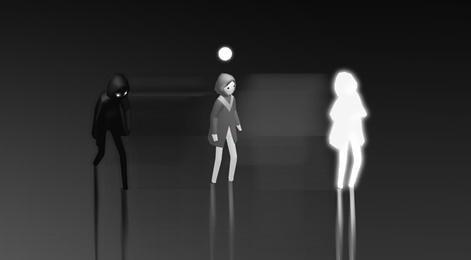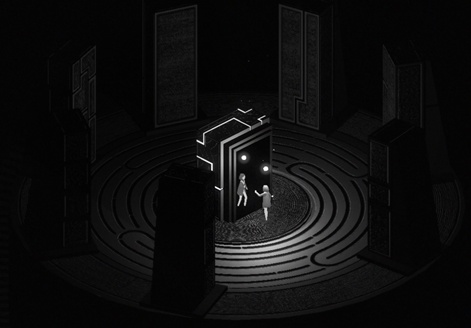Sanatan Suryavanshi thought he had left video games behind. An avid Counter-Strike player during his childhood in India, he would skip out on school to join his clan at a local internet café.
Unaware of the medium's potential to tell immersive stories, he would soon leave a life of gaming behind in search of something more creatively fulfilling.
“I have a few friends who are into games, but every time they brought it up or would ask me to come over and play, I would just see more Counter-Strike,” Suryavanshi tells PocketGamer.Biz.
“It was just not appealing to me anymore. It was a phase of my life that I had left behind.”
Keys to the kingdom
And so, Suryavanshi would find himself in animation learning the fundamentals of world building under the apprenticeship of Disney production designer Hans Bacher, who has credits on a slew of classics from the Lion King and Aladdin to Mulan and Hercules.
Suryavanshi’s own work within the animation space would take on a notably different tone, however, with his work as an art director on the Oscar-nominated title The Breadwinner proving to be a standout.
The animation tells the tale of a young girl who takes on the appearance of a boy in a bid to take care of her family after her father is imprisoned by the Taliban.

After a seven-year stint in animation, however, the call of the games industry would slowly creep in, with Suryavanshi taking on freelance jobs doing art on mobile with several mobile games developers.
What would seal Suryavanshi return, however, would be the lessons learnt from playing Thatgamecompany’s Journey and Campo Santo’s Firewatch. Namely, that games could form a compelling identity and stand on their own artistic merit.
“I’ve always been very interested in world-building, interactivity and the idea of having a response from the viewer,” says Suryavanshi.
“That’s something that’s becoming a more significant thing within the animation sphere. You have a lot of blending of professions in our generation’s age.
“You have a lot of people from film jumping into games and lot of people from games jumping to film, and games are becoming more like film and vice-versa.”
Press start
Suryavanshi would link up with 4L Games to craft his first game Fracter, which plays out as an abstract puzzler with prominent themes of light and dark appearing throughout.
I had all these requests, being a feature film guy, and my tech guys would just look at me like I had gone insane.Sanatan Suryavanshi
While he was attracted to the intimacy of forming smaller teams to work on a game, as opposed to the 50-strong teams he was used to, the learning curve was steep.
“It was brutal,” Suryavanshi recalls.
“Thinking back on it I realise that there were three transitions I was making.”
The first two transitions were standard fare for someone in his position, being a keen animator he had new obstacles of dialogue and music to consider and overcome.
The most significant challenge, however, would be adjusting his scope and remembering he was designing visuals for a mobile game rather than a feature animation.
“A lot of my ideas at the very beginning were not catering to a device which was capped at 60 frames per second and could fit in the palm of your hand,” Suryavanshi tells us.
“I had all these requests, being a feature film guy, and my tech guys would just look at me like I had gone insane.”

While Fracter boasts strong themes of a duality of self and inner conflict, Suryavanshi is shy of giving it a singular focus and would rather leave the story’s meaning ambiguous in a bid to make it more meaningful to the player.
“There are good arguments that go to both sides, but I think it comes down to taste,” he explains.
“I like things which that give me the room to make my own mind up about things.
“I could certainly say that was the hope with Fracter. That there would be a few players, even if a small percentage, who beyond just finding a puzzle game would connect with it on a deeper level.
“Players who could see the themes of light and dark but more importantly that there are two sides to each of us, the cognitive dissonance of a person or in some cases bi-polarity.”
I like things which that give me the room to make my own mind up about things.Sanatan Suryavanshi
Stopping short of continuing, Suryavanshi says that going further than that may risk ruining a player’s possible immersion within the game.
“That’s what I mean though, As soon as I get too specific I can hear myself and I just want to stop talking because I think it closes too many doors for people who just see it as a mobile game,” he says.
“It’s a bit of a mirror that way, in that you can view it in the way that you want to view it and hopefully it means that to you.”
No shades of grey
One thing he would admit, however, is that the game's usage of black and white was a vehicle for driving its themes.
According to Suryavanshi, the call to ditch a colour palette to better articulate his themes came early.
“It’s about the opposition, right? And what is a better metaphor for that visually than black and white,” he tells us.
“There are two sides to every conversation, and it’s quite personal to me, but we have a side inside us that is fighting with the other half.”

Despite being a relative newcomer to the mobile games scene, Suryavanshi and 4L Games finished Fracter in 11 months.
Released back in July, Suryavanshi reflects that the support for the game was more than he could imagine.
Looking forward, he is looking forward to creating more games in the mobile games market, despite numerous challenges of saturation and competition.
“I wouldn’t trade the indie experience for the world,” says Suryavanshi.
“It’s tough out there, but doable.”
Fracter is available on iOS and Android now.
You can read more interviews in our Indie Spotlight series here.
You'll find yet more indie stories at The Indie Track at Pocket Gamer Connects London 2019 on January 21st to 22nd.





















